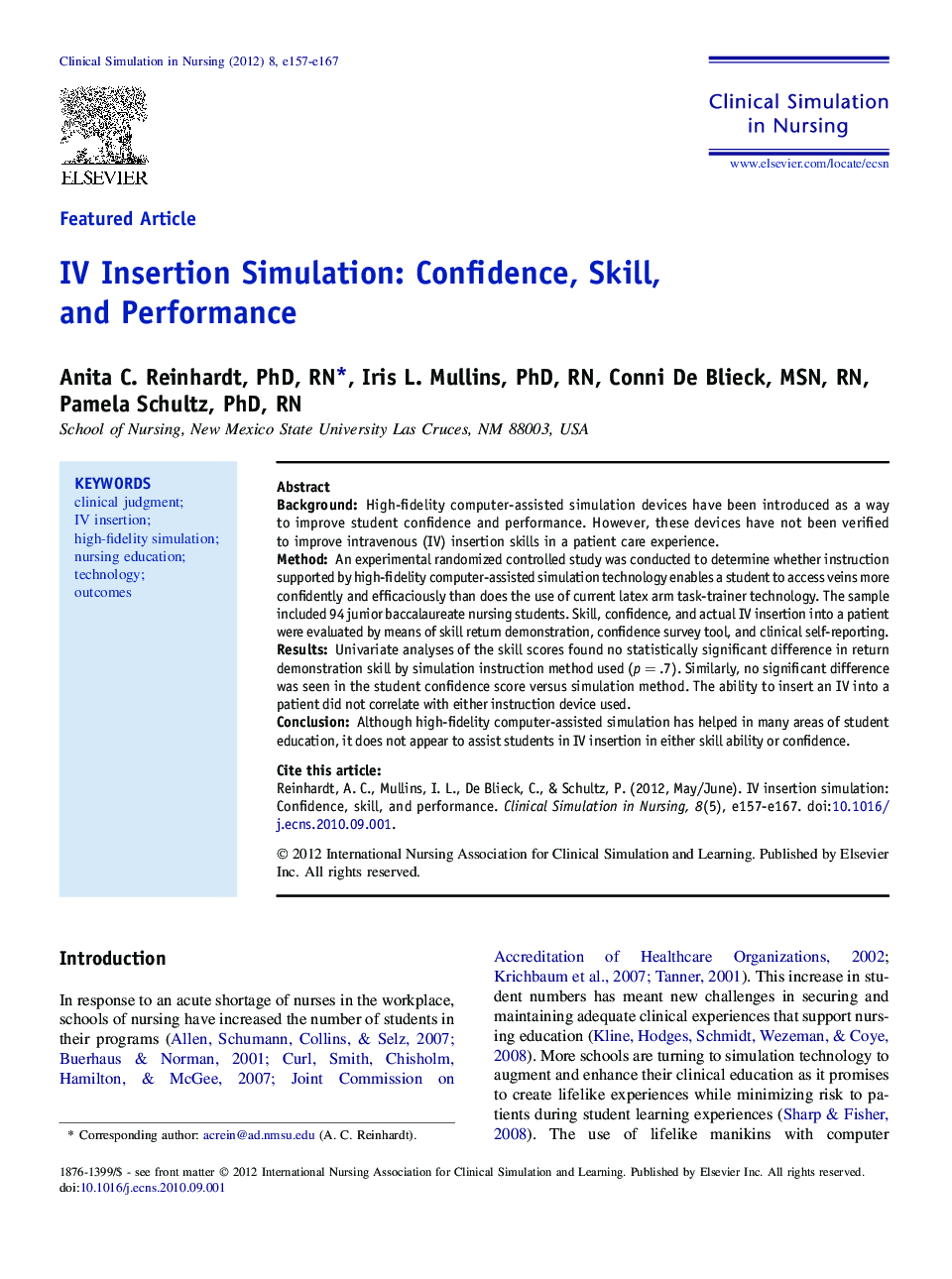| Article ID | Journal | Published Year | Pages | File Type |
|---|---|---|---|---|
| 2645876 | Clinical Simulation in Nursing | 2012 | 11 Pages |
BackgroundHigh-fidelity computer-assisted simulation devices have been introduced as a way to improve student confidence and performance. However, these devices have not been verified to improve intravenous (IV) insertion skills in a patient care experience.MethodAn experimental randomized controlled study was conducted to determine whether instruction supported by high-fidelity computer-assisted simulation technology enables a student to access veins more confidently and efficaciously than does the use of current latex arm task-trainer technology. The sample included 94 junior baccalaureate nursing students. Skill, confidence, and actual IV insertion into a patient were evaluated by means of skill return demonstration, confidence survey tool, and clinical self-reporting.ResultsUnivariate analyses of the skill scores found no statistically significant difference in return demonstration skill by simulation instruction method used (p = .7). Similarly, no significant difference was seen in the student confidence score versus simulation method. The ability to insert an IV into a patient did not correlate with either instruction device used.ConclusionAlthough high-fidelity computer-assisted simulation has helped in many areas of student education, it does not appear to assist students in IV insertion in either skill ability or confidence.
